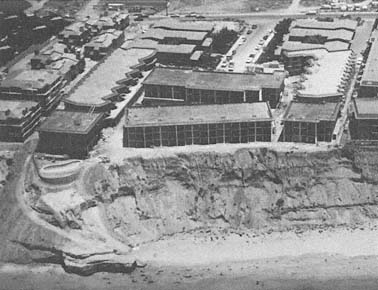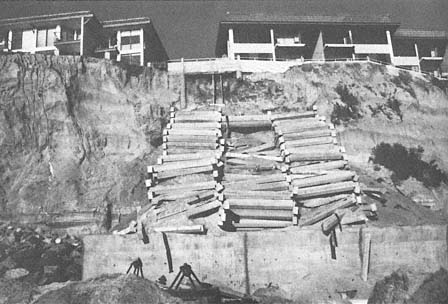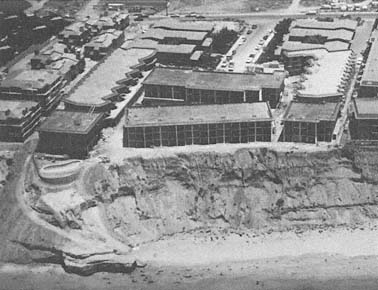
Institutional memory is a wonderful tool. If we forget our history we are doomed to repeat its mistakes and will not learn from them. The picture above shows the condominiums at the southern end of Solana Beach around the time of its construction in 1974. Note the bluff is already eroding and the bluffs were eroding during construction. You can learn more about this by reading:
Kuhn, Gerald G., and Francis P. Shepard, "Sea Cliffs, Beaches, and Coastal Valleys of San Diego County: Some Amazing Histories and Some Horrifying Implications". Berkeley: University of California Press, c1984. The picture above and many others are from that text. It is available online at
http://ark.cdlib.org/ark:/13030/ft0h4nb01z/. The picture is on page 73.
One of the key elements of our campaign is to show the public and the policymakers that the baseline condition of our coast is a naturally eroding condition impacted by complex factors including the geology of the coast, sea level rise, wave energy and the presence of sand. In the above example, the bluff material is extremely susceptible to erosion since it is composed of sediment that was carried to the coast via an ancient river. Between 1971 and 1978 the area experienced 10 feet of erosion according to Kuhn and Shepard. No El Nino or lack of sand caused this erosion. It was simply the lack of due diligence by the developer in building in this location.

Unfortunately, a seawall now exists at the subject site. It was built immediately after the development was completed at this location. The seawall collapsed soon after it was built (above) and was rebuilt at the same site(below). It still exists today.

How much wider would the beach have been had this wall never been built given that the bluff eroded 10 feet in 7 years? In this case, we will never know, but we do know that lack of sand and El Nino storms did not cause this seawall to be needed thanks to the work of Kuhn and Shepard.


